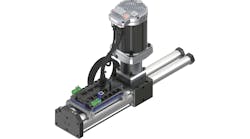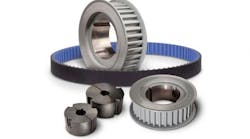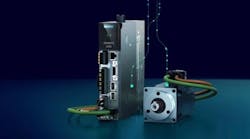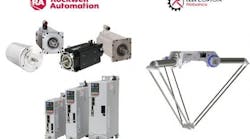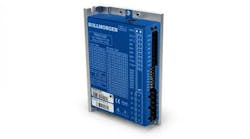Synchronous Plus Drives Provide High-Torque, Flexibility with Dual Sprocket Design
March 6, 2009
Related To:
TB Wood’s Synchronous Plus™ synchronous drives offer the flexibility of a dual sprocket design that features both metric and standard-tapped holes coupled with a high-capacity Synchronous Plus belt. As a result, the Synchronous Plus drive delivers 50% more horsepower capacity than standard-construction, high-torque drives, according to the company. The design allows for the use of smaller, lighter weight sprockets which, in many sizes, are drilled for both inch and metric hardware.Synchronous Plus belts feature helically-wound, extra-strong fiberglass cords that are chemically treated and designed to assure superior length stability, maximum flexibility, and high tensile strength for shock loads. Teeth are molded integrally with the backing that protects the tensile members. Teeth and backing components are both manufactured from premium quality, synthetic rubber that provides exceptional resistance to heat, oil, ozone, and flex fatigue. Precise tooth formation and accurate spacing permit quiet, smooth, uniform transmission of power with resistance to tooth jump and shear.Nylon cover fabric construction is the key to the belt’s outstanding horsepower and torque rating. It not only assures maximum drive efficiency but provides exceptional resistance to tooth wear and shear from friction. Because they need no lubrication, the drives are ideal in applications where maintenance is difficult or where downtime could prove extremely expensive.momoLoad capacities are available for a wide range of torque loads. With high mechanical efficiency that remains high throughout a wide speed range, Synchronous Plus drives also offer precision unmatched by V-belt drive systems. The constant driven speed with no loss due to belt creep or slippage is ideal for precision applications in material handling, packaging and high-speed printing and for machine tools such as indexers, drill presses and boring mills where synchronization is a necessity.

